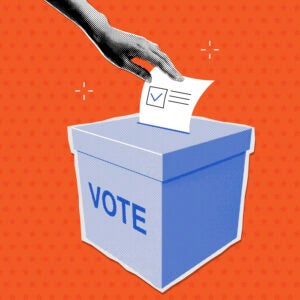 “Data Driven Thinking” is written by members of the media community and contains fresh ideas on the digital revolution in media.
“Data Driven Thinking” is written by members of the media community and contains fresh ideas on the digital revolution in media.
Today’s column is by Andrew Casale, VP Strategy, Casale Media.
What’s an ad impression worth? That question remains surprisingly difficult to answer when it comes to real-time bidding. On our exchange with connected demand-side platforms, we’ve seen bids within the same auction for the same impression range from one penny to $999.99. The perceived value of these impressions is all over the map. And would-be buyers who are outbid never find out which price ultimately won the impression they attempted to buy, thus raising a huge barrier before the alignment of bid prices with market demand.
Improving today’s system of price discovery is imperative if we want to continue enjoying torrid growth rates in the RTB marketplace.
To dive a little deeper, less than 5% of the auctions we run have a second bid within a penny of the winning bid price (e.g. $2.50 vs. $2.51). That would be a sign of a positive valuation curve in which those in the market mutually agree upon the approximate value of an impression. By contrast, in our auctions the winning bid price is quadruple that of the second highest bid (e.g. $1.00 vs $4.00) an eyebrow-raising 40% of the time, underlining the lack of agreement on appropriate valuation.
It doesn’t have to be this way. I’d like to propose that we borrow principles from both the “first look” private marketplace model as well as from eBay, to help narrow this gap. The idea is to set an upfront expectation about the value of an impression. This would enable exchanges to conduct real-time bidding and real-time buying in parallel, putting a greater emphasis on the value of any given impression.
Here’s how it would work: We’d add the RTB equivalent of eBay’s Buy It Now concept, which I’ll herein refer to as a “publisher’s ask price.” A publisher would continue to set a floor as they normally do today – say at $2.00 CPM – but could also set an ask price for a given impression – say at $5.00 CPM. As is the case today, unless the floor price is met, the impression will not be bought. But if a buyer is willing to go above that floor to the posted ask price faster than competing bids, they’re guaranteed to win the impression.
Introducing this additional element of speed would let buyers win impressions not only by submitting the highest bid but also by submitting the fastest bid that meets the ask price. The average auction takes place in 100 to 150 milliseconds, but with bidders incentivized to bid even faster, the exchange could conceivably close an auction early, in one to five milliseconds (yes, we do get bids this fast, especially with peering). The overall ecosystem would benefit from this. Ads would be served faster; page load times would accelerate, benefiting both the publisher and the user experience; and brands could more predictably value the impressions they most covet. The exchange would then only ever “go to auction” if inventory fails to be bought outright for the ask price.
An ask price option benefits buyers in a number of ways. Potentially, they can get a discount on their clear prices by avoiding bidding wars that ratchet higher than the ask price. Ads would also serve on the page faster, which we know has some positive influence on ad performance. Finally, buyers would spend less time guessing what the current arbitrary high bid price is for an audience segment they deem to be of great importance. Is it $10, $100, or $999? With an ask price, buyers would finally know.
One might argue that the publisher loses here because buyers can win auctions for prices lower than their potential maximum bid. It’s true that this could happen, but looking at the raw transactional data, I contend that the downside is marginal at best. As with the data I presented earlier, the number of times a bid clears far above a floor is low. This won’t change until bid density dramatically rises, and – as it does – publishers can opt to increase their ask prices, opt out of the model, or perhaps only employ this on their long-tail impressions. Furthermore, publishers could set prices in closer alignment to how they value their media (e.g. based on audience segments stored in an integrated DMP), rather than letting the sparse bidding market arbitrarily decide, the way it does today.
Today’s RTB market faces a huge disparity in impression valuation. The overall benefit of putting an “ask price” option in place would be to arm buyers with more insight into how sellers perceive the value of their media. Currently, we have a zero-to-infinity price delta, which is not an accurate representation of the ecosystem. By creating a tighter price curve, we’ll add more predictability to buyer expectations in this marketplace, which will benefit all players over the long haul.
Follow Casale Media (@casalemedia) and AdExchanger.com (@adexchanger) on Twitter.











